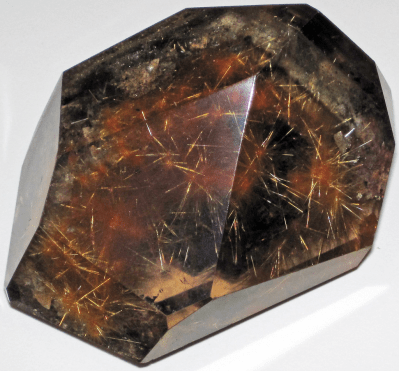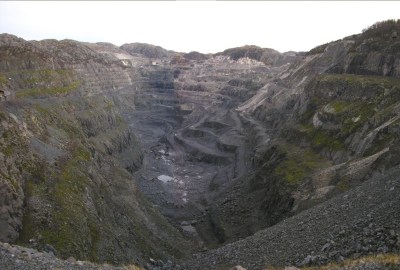

Mining And Refining: Titanium, Our Youngest Industrial Metal
source link: https://hackaday.com/2023/12/05/mining-and-refining-titanium-our-youngest-industrial-metal/
Go to the source link to view the article. You can view the picture content, updated content and better typesetting reading experience. If the link is broken, please click the button below to view the snapshot at that time.

Mining And Refining: Titanium, Our Youngest Industrial Metal

Earlier in this series, we made the case for copper being “the metal that built technology.” Some readers took issue with that statement, noting correctly that meteoric iron and gold were worked long before our ancestors were able to locate and exploit natural copper outcroppings, therefore beating copper to the historical punch. That seems to miss the point, though; figuring out how to fashion gold decorations and iron trinkets doesn’t seem like building the foundations for industry. Learning to make tools from copper, either pure or alloyed with tin to make bronze? Now that’s how you build an industrial base.
So now comes the time for us to make the case for our most recent addition to humanity’s stable of industrial metals: titanium. Despite having been discovered in 1791, titanium remained locked away inside abundantly distributed ores until the 1940s, when the technological demands of a World War coupled with a growing chemical prowess and command of sufficient energy allowed us to finally wrest the “element of the gods” from its minerals. The suddenness of it all is breathtaking, too; in 1945, titanium was still a fantastically expensive laboratory oddity, but just a decade later, we were producing it by the (still very expensive) ton and building an entirely new aerospace industry around the metal.
In this installment of “Mining and Refining,” we’ll take a look at titanium and see why it took us over 11,000 years to figure out how to put it to work for us.
Starting With Sand
For something that has been commercially exploited for less than a century, titanium is surprisingly abundant. It’s the ninth most abundant element in Earth’s crust, making up more than half a percent by mass. Titanium is never found in the metallic state in nature, but rather as oxides like titanium dioxide (TiO2), and as such is widely distributed around the world.
Rutilated quartz from Minas Gerais, Brazil. The needle-like crystals are the rutile. Source: James St. John, CC BY 2.0
The chief mineral ores of titanium are rutile and ilmenite. Rutile is basically pure TiO2 in crystal form that occurs in many types of rocks including quartz, gneiss, and schist. Ilmenite is a titanium oxide complexed with iron (FeTiO3), and while sometimes found in its pure form, it’s more often found mixed with manganese and magnesium. Ilmenite is mostly found in heavy mineral sands that have weathered out of solid rock deposits, which has the effect of making it relatively easy to harvest using standard open-cast mining techniques.
There are large ilmenite deposits in South Africa, Australia, Canada, China, and Ukraine. Commercially viable rutile deposits are harder to come by, with most of the mineral coming from Australia, countries around the southern tip of Africa, and Ukraine. Something like 80% of the world’s supply of titanium comes from ilmenite, with a mere 5% sourced from rutile; the rest comes from “titaniferous slags,” which are essentially iron- and titanium-containing waste products from titanium refining processes.
An open-cast ilmenite mine in Norway, considerably less glamorous than rutile. Source: Mikenorton, CC BY-SA 4.0
Like aluminum, titanium is an element that forms thermally and chemically stable oxides, so liberating it from its minerals is a complex and energy-intensive process. Processing begins with mining, which for certain ilmenite deposits can be as simple as scooping up sand with loaders or eroding it with high-pressure water and pumping up the resulting slurry. Rutile is also sometimes recovered directly from weathered sands, but when either mineral occurs embedded in other rocks, more extreme measures such as blasting and crushing may be required to get the ore into grains fine enough to be conveniently moved around the processing plant.
Concentration of the ore and removal of non-ore material (gangue) and other valuable minerals come next. Ore feedstocks with a lot of iron in them, such as ilmenite, undergo a magnetic separation step, with powerful spinning magnets that remove magnetic particles from ground ore carried by a conveyor belt. Electrostatic separation, where electrostatically charged ore particles pass through strong electric fields to remove titanium oxide particles from gangue, is also used. Spiral concentrators, which are also used in graphite refining, are often used to separate the dense gangue particles in an ore slurry from less dense titanium oxides.
Bringing The Heat
Once the raw ore has been concentrated, the tightly bound oxygen in the titanium oxide needs to be removed. The Kroll process is the most common method used today, and to say that it’s an energy-intensive process is a bit of an understatement. The first step is to replace the oxygen atoms in the titanium oxides with chlorine to make titanium tetrachloride (TiCl4). In the case of ilmenite feedstock, the reaction looks like this:
Carbon, usually in the form of coke, is added to the titanium ore, after which 900°C chlorine gas is blasted through the reaction chamber until the reaction is complete. The resulting TiCl4, also known as “tickle,” is a dense, volatile liquid with a low boiling point (136.4°C), which is convenient because that makes it relatively easy to purify by distillation. Impure TiCl4 is heated in a stainless steel distillation chamber, and the vapors are fed directly into the main Kroll reaction chamber, where the high-energy magic happens.
The Kroll reactor is a thick-walled stainless steel vessel with an argon atmosphere. At the bottom of the vessel, heated to about 850°C, is a pool of liquid magnesium. The incoming pure TiCl4 gas reacts with the metallic magnesium over a period of up to four days to form magnesium chloride (MgCl2) and elemental titanium:
The slug of titanium that forms in the reaction chamber is called titanium sponge, and aptly so given its porous nature. The sponge holds a lot of the MgCl2 waste; this is recovered by another round of distillation by heating the sponge to more than 1,400°C and condensing the vapor. The magnesium metal in the MgCl2 can then be recovered for reuse by electrolysis.
Titanium ingot, fresh from the vacuum arc remelting furnace. Source: Alexey Rezvykh, Adobe Stock.
Once the titanium sponge slug is allowed to cool and removed from the Kroll reactor, surface scale formed by reaction products is removed. Different parts of the sponge have different grades of titanium — the low-grade waste from the bottom of the slug, mid-grade stuff at the top and around the outside, with the highest-grade metal at the core. A guillotine shear slices the slug into sections, with the mid-grade product going for blending and further refining while the high-grade metal is further chopped and crushed into small chunks. These pieces, along with any alloying metals that might be needed, get rammed into a press that forms them into an electrode.
Placed into a water-cooled vacuum arc remelting (VAR) furnace and heated to 1,700°C by an electric current, the electrode melts into a titanium ingot. Depending on the properties required from the finished metal, the ingot may go through another VAR purification. Pure ingots then go through a long series of forging, milling, grinding, and rolling processes, typically with a heat-treatment process in between each operation. The result is either plates, billets, or coiled sheets of titanium alloy, ready for manufacturing use.
White As Can Be
Metallic titanium isn’t the only desirable product from the mining and refining of titanium ore. Titanium dioxide itself has hundreds of industrial uses, most of which have to do with the brilliant whiteness of the powdered solid. Titanium dioxide is present in something like 60% of all pigments produced; look at the nearest painted wall or ceiling and it’s almost certain it contains at least some TiO2. It’s also important in paper manufacturing, pharmaceuticals and cosmetics, sunscreen products, ceramic glazes, food additives, and thin-film optical products.
All TiO2 starts with TiCl4 feedstock; in fact, 90% of the “tickle-four” manufactured every year goes to the production of titanium dioxide, typically with a simple hydrolysis reaction:
Alternatively, the tickle can just be blasted with oxygen:
Either way, the oxidation of TiCl4 results in fine white crystals of titanium dioxide, which are captured, dried, ground, graded, and packaged for shipping.
Thermite Makes It Better
Almost nothing about the mining and refining of titanium is environmentally friendly. Huge energy inputs are needed all along the way, from the fossil fuels needed to harvest and prepare the ore to the electricity needed to run the vacuum arc furnaces and recycle the magnesium chloride. Unfortunately, there aren’t many points in the process that are amenable to the green treatment, thanks largely to the chemical and thermal stability of titanium oxides.
That doesn’t mean the search isn’t on for ways to make titanium refining more sustainable, though. One Japanese company, Toho Titanium, is working on a promising pyrotechnic thermite method of producing titanium. The method combines powdered titanium ore with fluorite, the mineral form of calcium fluoride, along with some powdered aluminum. When the mixture is ignited it undergoes an extremely energetic thermite reaction, which heats the smelter without the need for external energy inputs. The reaction reduces the titanium oxides in the ore to a pool of molten titanium under a slag of aluminum oxide and calcium fluoride. The titanium is further purified by electrolytic refining, but even with that energy-intensive step, the company claims their process can reduce electricity consumption by 70% to 80%.
Recommend
About Joyk
Aggregate valuable and interesting links.
Joyk means Joy of geeK


